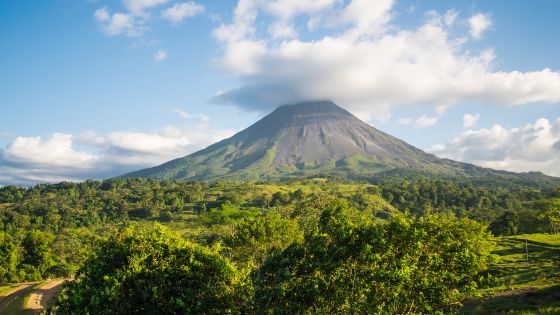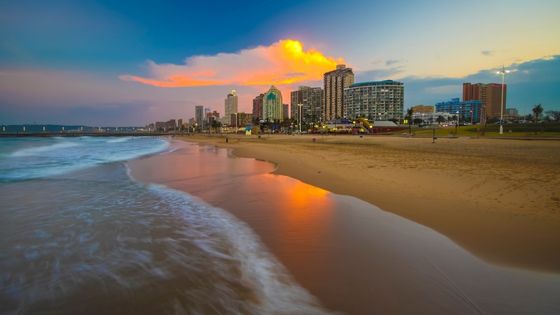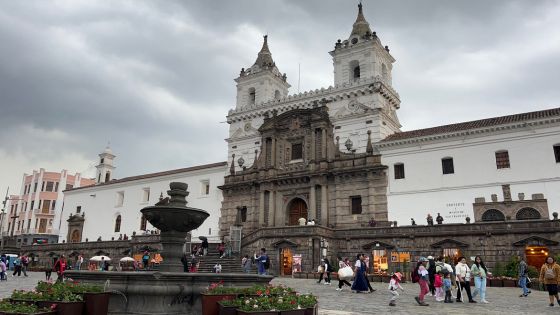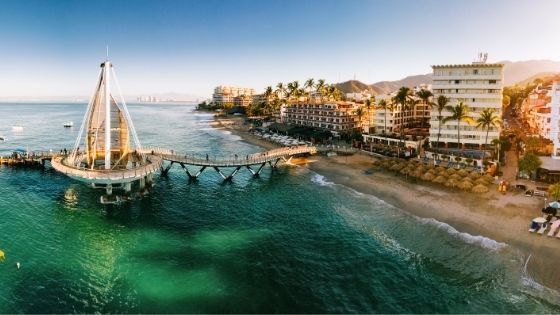Is America Still Safe for Foreigners? The New Tariff Wars and What It Means for Travelers of Color
People ask me all the time if America is safe to visit, especially if you are Black or Brown. I’m 54 and have lived in the United States my entire life and I can tell you that the answer is complicated.
On the surface, this country is full of everything travelers dream about: big cities that never sleep, wide open landscapes, and cultural experiences that you cannot find anywhere else.
At the same time, the reality for people who look like me can be very different from what you see in a glossy travel brochure.
Safety here is not just about watching your wallet or staying alert in crowded places like Rome or Mexico City.
It is also about how you are treated when you go through airport security, how a police officer reacts when they pull you over, or the feeling you get when you walk into a restaurant in a small town where no one else looks like you.
I have been pulled aside for extra questioning at airports, and I have driven through areas where Confederate flags hang proudly especially in Tennessee where I live.
Those moments remind me that traveling while Black in America carries its own set of risks.
Foreign governments like Canada, Germany, and New Zealand have even issued travel advisories that mention racial tensions and gun violence in the United States.
The FBI has reported that hate crimes are at historic highs, and most of those crimes target Black people.
The links in this post may be affiliate links. That means that if you click them and make a purchase, this site makes a commission. It will have no impact on the price you pay or the experience of your purchase.
I do not share this to scare you, but to give you the honest picture of what it feels like to live here and to travel across this country as a Black woman.
So should you still come to America? I believe the answer is yes, but with awareness. Cities like New York, Washington DC, Atlanta, Los Angeles, and Chicago are rich in culture and diversity, and they are places where travelers of color can often feel welcomed.
The President has recently ordered the National Guard and other federal law enforcement into cities like Memphis, Washington, D.C., and Chicago.
These actions are part of his “crime crackdown” strategy. This is real. It means that in some cities, law enforcement is more visible and more force is being used around public safety.
You should be aware of it, because what is normal in one place might feel very different in another. (Here is one article that reports the plan to send the National Guard to Memphis and mentions upcoming deployments to Chicago. SourceReuters)
A growing number of U.S. allies have issued travel warnings this week advising caution for those looking to travel to America.
This includes Germany, the U.K., Denmark and Finland, and while none of the advisories is a formal warning against travel, the guidance highlights the increasing concern about immigration enforcement and the unpredictability of border entry, even for those with valid travel documents.
UK, Finland, Denmark join Germany in issuing US travel advisories” from MRT News. Midland Reporter-Telegram
Condé Nast Traveler lists Australia, Belgium, Canada, China, Denmark, Finland, France, Germany, Ireland, Netherlands, New Zealand, Portugal, United Kingdom. Condé Nast Traveler
Another example of how government policy directly impacts communities of color happened in Georgia. ICE agents raided Hyundai and Kia plants across the state, arresting hundreds of immigrant workers.
News reports described how families were torn apart overnight and how the raids spread fear through Latino and immigrant neighborhoods.
Even if you are a visitor here on vacation, this climate of raids and deportations creates an atmosphere where anyone who is Brown or speaks with an accent may feel under suspicion.
With that being said if you are white you are probably safe traveling to the US but if you are from any Black or brown country I would think twice before traveling to the US.

For Travelers from Canada
- Government of Canada Travel Advisory for the U.S.: Check Here
- Canada Border Services Agency: Visit Here
For Travelers from the UK
- UK Government Foreign Travel Advice (USA): Check Here
- UK Embassy in the U.S.: Visit Here
For Travelers from the Caribbean
- Jamaica’s Ministry of Foreign Affairs and Foreign Trade (for Jamaicans traveling to the U.S.): Check Here
- Trinidad & Tobago Foreign Affairs for U.S. Travel: Visit Here
At the end of the day, traveling to the U.S. as a person of color requires awareness, preparation, and confidence. It’s important to stay informed, protect yourself, and enjoy the experiences that make travel so rewarding.
I never thought I’d see a time when America felt like an uncertain place for travelers, but here we are.
As someone who has spent years exploring different countries, speaking at travel conferences, and advocating for fair treatment of travelers of color, I’ve always believed that travel is about connection, discovery, and joy. But in the past few years, something has shifted.
The energy at U.S. borders and in the US in general feels different. The unease isn’t just about the long immigration lines or strict visa rules it’s about the silent but growing hostility toward foreigners, particularly those who aren’t white.
Whether I’m scrolling through headlines about travel bans, reading stories from my community about racial profiling, or hearing firsthand accounts from fellow travelers who were treated like criminals at customs, the reality is clear: America isn’t as welcoming as it once was for people of color.
So, if you’re a Latino traveler from Mexico, a Chinese student visiting family, or even a Black Canadian thinking about a weekend trip to the U.S., you might be wondering: Is it still safe to visit? Will I face extra scrutiny? Will I be treated differently just because of where I’m from?
The answer is NO, it probably not safe, you will face extra scrutiny and you will be treated differently.
Digital Surveillance and Detentions at U.S. Borders: What Travelers Need to Know
Another layer of concern that often flies under the radar is how the U.S. treats travelers at the border.
Since Trump took office, there have been a growing number of cases where people have been detained, questioned, or even deported based on their social media content, political views, or who they’re associated with online.
Many travelers don’t realize that U.S. Customs and Border Protection (CBP) agents have wide-reaching authority. They can search your phone, scroll through your photos, read your messages, and review your social media posts without a warrant.
And yes, your tweets, Facebook posts, TikToks, and WhatsApp chats could be used against you, especially if they contain anything deemed critical of the U.S. government or the president.
There have been real cases that highlight how serious this is:
- A British tourist was denied entry after joking on Twitter about “destroying America” on vacation (he meant partying).
- A Palestinian student was detained at Boston Logan Airport and denied entry due to politically charged posts shared by his friends—not even posts he wrote himself.
- A Canadian journalist was questioned about her political beliefs and articles she had written critical of U.S. foreign policy.
- And most recently, a story went viral about an American married man who voted for Trump and whose Portuguese wife was pulled into secondary inspection at the airport. Despite being married and having a valid visa, she was sent to a detention center and is now being deported back to Portugal. (Oh Well)
So, what does this mean for you as a traveler? It means you need to know your rights at the border. While non-citizens have fewer legal protections than U.S. citizens at ports of entry, you do not have to provide passwords or unlock your devices in most cases.
That said, refusing could still result in being denied entry if you are not a U.S. citizen or green card holder.
Here’s what you can do to protect yourself:
- Clean up your digital presence before traveling. Remove posts that could be misinterpreted.
- Use privacy settings on your social platforms but remember, nothing online is truly private.
- Travel with a clean device, or backup your personal data and carry a phone with minimal apps and accounts.
- Don’t assume your citizenship protects you if you’re traveling with a non-citizen spouse or friend CBP makes mistakes.
- Contact a lawyer immediately if you or someone you know is detained.
The U.S. government has made it clear: they’re watching us closely. And for travelers of color, immigrants, or anyone who doesn’t “fit the mold,” this kind of surveillance can feel incredibly invasive and targeted.
Knowing your rights matters more than ever when you’re flying within the U.S. or internationally.
If you’re a U.S. citizen flying domestically, TSA and ICE cannot search your phone or force you to unlock it without a warrant.
If you’re approached, you can calmly respond, “I don’t consent. Am I free to go?” On international flights, however, the rules shift.
U.S. Customs can legally search your device at the border even without a warrant. You’re not required to provide your passcode, but refusing may result in them holding your phone temporarily.
One important safety tip: power off your device before inspection so it won’t unlock with Face ID or a fingerprint. Regardless of where you’re headed, stay calm, be respectful, and protect your privacy.
The more you understand your rights, the better prepared you’ll be to handle US Customs agents.

Hate Crimes, Racism, and Sundown Towns in the U.S.
The numbers do not lie. FBI data shows that hate crimes in the United States are at record highs, and the majority of those crimes target Black people.
For those of us living here, this is not just a statistic, it is a lived reality. Racism shows up in both subtle and overt ways, from being followed in a store to violent attacks that make the evening news.
Travelers should also be aware of something called sundown towns. These are communities, mostly in the South and Midwest, that historically posted signs warning Black people not to be caught there after dark.
While the signs may be gone, the mindset has not disappeared. Driving through rural areas late at night can still feel dangerous, especially if you are Black or Brown.
I live in Murfreesboro, Tennessee, which is in one of the most conservative counties in the country.
My family is the only Black family in our neighborhood, and that fact alone shapes how I move through my daily life.
I love my home, but I am always aware of how my presence is perceived, and that awareness doesn’t go away when I travel.
If I feel this in my own backyard, you can imagine how much more heightened it can be in a town that doesn’t see Black people often.
Just last week a Black college student was found hanging from a tree in what police initially called a suicide.
Officials claimed there was no sign of foul play, but families and community leaders immediately pushed back, demanding a deeper investigation because history tells us otherwise (ABC News).
As a traveler, especially if you are planning a road trip through the South, you need to take this seriously.
Research your route, know where you are stopping, and trust your instincts if a place does not feel safe.
America has so much beauty to offer, but ignoring these realities would be dishonest and potentially dangerous and it’s. my job to be honest with you before you book your flight to the US
How to Stay Safe if You Encounter ICE in the U.S.
Immigration and Customs Enforcement (ICE) has carried out high-profile raids at factories, workplaces, and even in neighborhoods, and it is not uncommon for Brown and Black travelers to feel nervous about being stopped or questioned.
If you are visiting the U.S. and find yourself approached by ICE, the most important thing to remember is that you still have rights.
You do not have to answer questions about your immigration status, where you were born, or how you entered the country.
Politely state that you want to speak to a lawyer and that you will not answer questions without one present.
Do not run or resist, but do ask if you are free to leave. If you are not being detained, you may calmly walk away. Keep copies of your passport, visa, and travel documents accessible, and store digital backups in a secure app.
If you believe your rights have been violated, you can call the American Civil Liberties Union (ACLU) at 1-800-775-ACLU, or contact your country’s embassy or consulate immediately.
Knowing these steps before you travel can help you stay calm and safe if you ever find yourself in an uncomfortable encounter.
Know Your Rights Checklist if Stopped by ICE
If you are taken into custody, call the ACLU (1-800-775-ACLU) or your embassy/consulate right away.
You have the right to remain silent: you do not need to answer questions about your status or birthplace.
You can say: “I want to remain silent and speak with a lawyer.”
Do not hand over fake documents – it is better to say nothing than to provide false information.
Ask if you are free to go. If the officer says yes, calmly leave.(Based on what I’ve seen on the news they probably will not let you go and they will rough you up)
If you are detained ask for a lawyer.immediately!
Keep a copy of your passport, visa, and travel insurance in your bag, and a digital backup in a secure cloud app.

Political Climate in the U.S.
The political climate in the United States has a direct impact on how safe visitors feel, especially travelers of color.
During the Trump administration, policies like the so-called Muslim ban, aggressive anti-immigration rhetoric, and the rollback of diversity and inclusion initiatives created an environment of fear and suspicion.
These actions did not just affect policy at the borders; they also influenced how everyday people treat foreigners and people of color within the country.
Travelers from Muslim-majority countries reported being singled out at airports, immigrant communities faced heightened raids, and diversity training programs across government agencies were cut back.
Even though administrations change, the tone set during those years still lingers.
Timeline of Trump-Era Policies and Actions (2017–2025)
| Year | Key Policy / Action | What It Meant for Travel & Safety |
|---|---|---|
| 2017 | Muslim Ban issued — restricting travel from several Muslim-majority countries. | Created fear among Muslim travelers; seen as precedent for stricter vetting and exclusion. |
| 2018 | Family Separation Policy at the southern U.S. border. | Heightened concern among immigrant and Latino communities; signals harsh immigration enforcement. |
| 2019 | Increased ICE raids in workplaces and neighborhoods; rollback of diversity and inclusion initiatives begins. | Raised anxiety in immigrant communities; people of color felt under heavier scrutiny. |
| 2020 | More anti-immigration rhetoric; enforcement around protests; increased visibility of law enforcement. | Made cities less welcoming for some; fear among foreign nationals and minorities about arbitrary police contact. |
| 2024 | Policy shifts begin in lead-up to election (drafts and promises around enhanced vetting, stricter immigration entrance rules). | Travelers and visa holders face increased uncertainty; announcements affect perceptions of safety before even arriving. |
| January 2025 | Executive Order 14159, “Protecting The American People Against Invasion,” signed on Jan 20. The White House+1 | Expanded expedited removals; sanctuary jurisdictions threatened; harsher enforcement for “inadmissible” immigrants. |
| January 2025 | Executive Order 14160, “Protecting the Meaning and Value of American Citizenship,” signed Jan 20. Wikipedia | Attempted ending of birthright citizenship for children born to undocumented or temporary-status parents; legal challenges followed. |
| June 2025 | Proclamation 10949: “Restricting the Entry of Foreign Nationals to Protect the United States from Foreign Terrorists and Other National Security and Public Safety Threats” signed on June 4. The White House+1 | Full bans on immigrant and non-immigrant visas from certain countries; partial bans on others. A new “travel ban” affecting many countries. This had immediate implications for foreign travelers. |
| 2025 (ongoing) | Renewed enforcement actions by ICE, raids in workplaces, and changes in sensitive-area protections (schools, churches). The Guardian+2American Immigration Council+2 | Increased fear among immigrant and minority communities about being arrested or questioned. Travelers may be unsure if “safe zones” like hospitals or schools still offer protection. |

FAQ- Is America Safe for Travel Right Now
Yes in major diverse cities, but rural areas can be less welcoming due to racial profiling and visible symbols of racism.
Yes. Countries including Canada and New Zealand caution visitors about racial discrimination and gun violence.
Mass shootings and gun-related violence are more common in the U.S. than in many other countries. Travelers should remain alert in crowded public spaces.
Airport profiling and harassment can happen, especially for those wearing visible religious clothing. Large cities with more diversity are generally safer.
New York City, Washington DC, Atlanta, Chicago, Los Angeles, Miami, and Houston are among the most welcoming.
It really depends!. Millions of people travel safely every year. But if you’re a traveler of color, it’s important to plan ahead, research safe areas, and understand your rights
Tips for Travelers of Color Visiting the U.S.
- Know Your Rights at the Border – Border patrol agents have a lot of power, but they can’t detain you without cause. If you have a valid visa or passport, stand your ground if you feel you’re being unfairly questioned.
- Avoid High-Risk Areas – Not every part of the U.S. welcomes foreigners. States with strict immigration policies—like Texas, Florida, and Arizona—might not be the best places to visit if you’re worried about racial profiling.
- Be Cautious with Law Enforcement – If the police stop you, stay calm and know that you have the right to remain silent. If possible, keep a translation app on your phone if English isn’t your first language.
- Use Ride-Sharing Instead of Driving – This might sound small, but using Uber or Lyft can help avoid unnecessary encounters with law enforcement, especially if you’re unfamiliar with U.S. traffic laws.
- Stick to Tourist-Friendly Cities – Major cities like New York, Los Angeles, and Chicago are more used to international visitors and are more diverse and welcoming.
- Lean on Your Embassy – If you’re in a difficult situation, don’t hesitate to contact your country’s embassy in the U.S. They can provide legal assistance and help if you feel unfairly detained.
Closing Thoughts
So, is the United States safe for Black travelers, Muslim visitors, or anyone worried about racism in America?
The answer depends on where you go and how prepared you are. Traveling while Black in the USA or driving through rural areas where sundown towns still exist can feel uncomfortable, even unsafe at times.
For Muslim travelers, airport racial profiling is still a reality, and for international visitors in general, foreign travel advisories highlight concerns about gun violence and racial tensions.
But here’s the truth: millions of people visit the U.S. every year and have unforgettable experiences. Cities like New York, Washington DC, Chicago, Atlanta, Los Angeles, and Miami are not only rich in culture but also places where travelers of color can often feel welcomed and supported.
If you plan ahead, stay aware, and know your rights, you can explore the beauty of America while protecting your peace of mind.
As someone who lives in Tennessee, in one of the most conservative counties in the country, I know firsthand what it feels like to navigate America as a Black woman.
I share these insights not to discourage you from visiting but to help you come prepared.
If you are thinking about traveling here, ask yourself what matters most to you. Do you want the buzz of diverse cities, the history of civil rights landmarks, or the natural wonders of national parks?
Whatever your answer, travel safely, know your surroundings, and remember that while racism in America is real.
Related Travel Safety Reads from Passports and Grub:
- Is It Safe to Fly? – A real look at safety concerns for air travelers.
- Is Mexico Safe? – A deep look into the realities of crime and tourism in Mexico.
- Is Cancun Safe for Travelers – A look into if Cancun is safe for American travelers.
- Is It Safe to Fly with Edibles– Practical advice for navigating flying with edibles.
✨ Want to feel more confident about your trip?
Before you book your flight, grab my Comprehensive Travel Safety Guide. It’s packed with practical tips on everything from navigating airports to staying safe on road trips and handling emergencies. I created it with travelers of color in mind, but the strategies apply to anyone visiting the U.S. or traveling abroad.
👉 Get the Travel Safety Guide here for $19.99

ARE YOU ALSO ON PINTEREST?
Why not save this post to your Pinterest board for later? I am also on Pinterest so feel free to follow Passports and Grub boards and get the latest PIN directly








But between the mass shootings, political tension, and rising hate crimes, it’s been hard to feel confident about visiting, even as someone who used to travel there regularly.
I appreciate how you didn’t just go into fear-mongering mode, but instead laid out the facts and encouraged readers to be informed and cautious without totally canceling their plans. Travel, like anything else, comes with risks, and understanding where and when to go—and how to stay aware—is key.
The part that hit me hardest was your note about being a Black traveler in America. That added layer of concern isn’t something all travel guides talk about, but it’s real, and it matters.
I also liked your tips about checking local advisories, avoiding certain areas, and just using basic street smarts—solid advice no matter where you’re traveling.